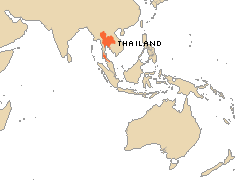
How do we know
An independent study by the Institute for Population and Social Research at Mahidol University in Thailand, supported by UNAIDS and the Thai Ministry of Public Health, provided the evidence that the program had contributed significantly to large-scale reduction of HIV transmission throughout the country. The study, conducted in one-third of Thai provinces, included a detailed survey of approximately 100 sex workers per province and 200 young males per province. Government STD statistics were drawn from records of outpatient departments of government hospitals plus certain STD clinics.Downloads
- Read the entire case study
(PDF | 169 K)
External Links
- Read the UNAIDS 2006 Report on the global AIDS epidemic
- View coverage from the Kaiser Family Foundation of the 2006 International AIDS conference in Bangkok
- Watch a video about AIDS in Thailand
- Browse reports and headlines related to HIV/AIDS in Thailand
- View webcast interviews with Senator Mechai Viravaidya and Thai AIDS Director Sombat Thanprasertsuk
- World Bank report says Thailand’s HIV/AIDS prevention and treatment programs should serve as a model
- Watch a video on fighting HIV/AIDS stigma in Thailand
Health Condition: HIV/AIDS is one of the greatest threats to human health worldwide, with an estimated 38.6 million people infected with the virus in 2005. The vast majority of people with HIV are in sub-Saharan Africa, where life expectancy today is just 47 years; without AIDS, it is estimated that life expectancy would be 15 years longer. The number of children who have lost a parent to AIDS is now estimated at 20 million. Between 1989 and 1990, the proportion of direct sex workers in Thailand infected with HIV tripled, from 3.5 to 9.3 percent, and a year later reached 21.6 percent. Over the same period, the proportion of male conscripts already infected with HIV when tested on entry to the army at age 21 rose six-fold, from 0.5 percent in 1989 to 3 percent in 1991.
Intervention or Program: In 1991, the National AIDS Committee led by Thailand's prime minister implemented the "100 percent condom program," in which all sex workers in brothels were required to use condoms with clients. Health officials provided boxes of condoms free of charge, and local police held meetings with sex establishment owners and sex workers, despite the illegality of prostitution. Men seeking treatment for sexually transmitted infections (STIs) were asked to name the sex establishment they had used, and health officials would then visit the establishment to provide more information.
Impact:
- Condom use in sex work nationwide increased from 14 percent in early 1989 to more than 90 percent by June 1992.
- An estimated 200,000 new infections were averted between 1993 and 2000.
- The number of new STI cases fell from 200,000 in 1989 to 15,000 in 2001.
- The rate of new HIV infections fell fivefold between 1991 and 1993-95.
Cost and Cost-Effectiveness: Total government expenditure on the national AIDS program remained steady at approximately $375 million from 1998 to 2001, with the majority spent on treatment and care (65 percent); this investment represents 1.9 percent of the nation’s overall health budget.

